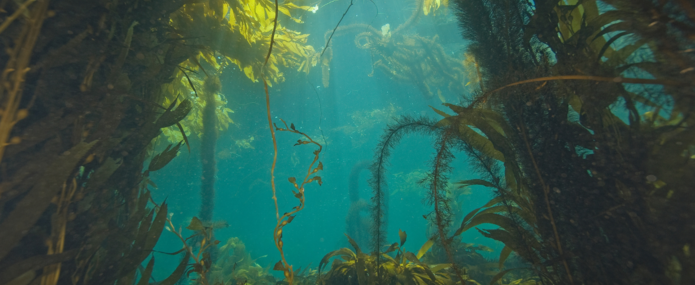Citation
Filbee-Dexter K., Pessarrodona A., Pedersen M. F., Wernberg T., Duarte C. M., Assis J., Bekkby T., Burrows M. T., Carlson D. F., Gattuso J.-P., Gundersen H., Hancke K., Krumhansl K. A., Kuwae T., Middelburg J. J., Moore P., Bachmann Ørberg S., Queirós A. M., Serrão E. A., Smale D. A., Pinto I. S., Suzuki N. & Krause-Jensen D. Carbon export from seaweed forests to deep ocean sinks. Nat. Geosci. (2024).
Abstract
The coastal ocean represents an important global carbon sink and is a focus for interventions to mitigate climate change and meet the Paris Agreement targets while supporting biodiversity and other ecosystem functions. However, the fate of the flux of carbon exported from seaweed forests—the world’s largest coastal vegetated ecosystem—is a key unknown in marine carbon budgets. Here we provide national and global estimates for seaweed-derived particulate carbon export below 200 m depth, which totalled 3–4% of the ocean carbon sink capacity. We characterized export using models of seaweed forest extent, production and decomposition, as well as shelf–open ocean water exchange. On average, 15% of seaweed production is estimated to be exported across the continental shelf, which equates to 56 TgC yr−1 (range: 10–170 TgC yr−1). Using modelled sequestration timescales below 200 m depth, we estimated that each year, 4–44 Tg seaweed-derived carbon could be sequestered for 100 years. Determining the full extent of seaweed carbon sequestration remains challenging, but critical to guide efforts to conserve seaweed forests, which are in decline globally. Our estimate does not include shelf burial and dissolved and refractory carbon pathways; still it highlights a relevant potential contribution of seaweed to natural carbon sinks.


